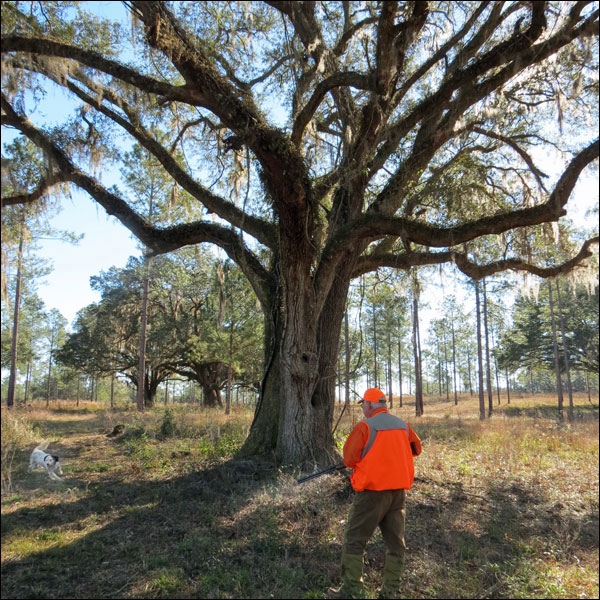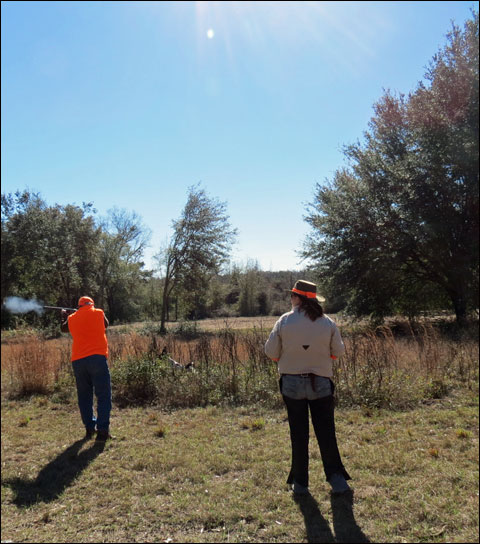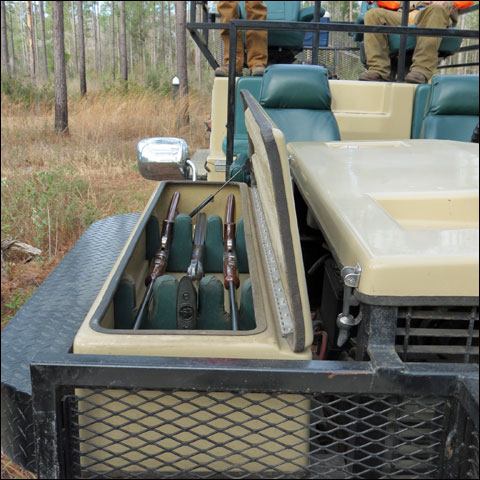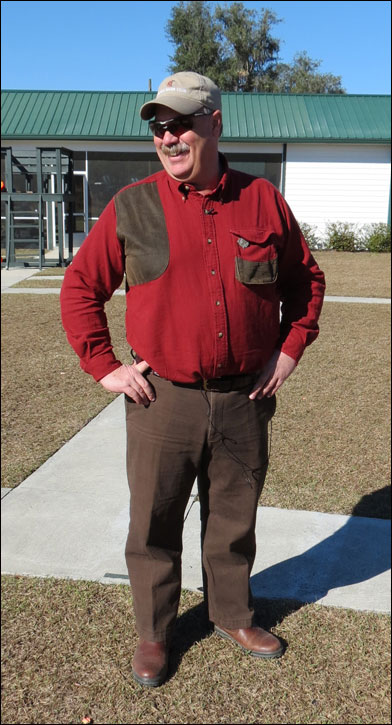The Wild and Wiley Bobwhites of Honey Lake Plantation

You recognize the spectacular beauty of Honey Lake Planation upon opening the door into the Pansy Poe Cottage and after those tentative steps into the softly lit passageway that whispers Southern secrets from the Gilded Age you happen to look toward the glow at the far end of the white bead-board living room, through the picture windows, surprised to see the pristine surface of Honey Lake shimmer in the Florida daylight.
God created man and He created the world for him to live in and I reckon He created the kind of world He would have wanted to live in if He had been a man — the ground to walk on, the big woods, the trees and the water, and the game to live in it. And maybe He didn’t put the desire to hunt and kill game in man but I reckon He knew it was going to be there, that man was going to teach it to himself, since he wasn’t quite God himself yet.
— William Faulkner, Go Down, Moses
You recognize the spectacular beauty of Honey Lake Planation upon opening the door into the Pansy Poe Cottage and after those tentative steps into the softly lit passageway that whispers Southern secrets from the Gilded Age you happen to look toward the glow at the far end of the white bead-board living room, through the picture windows, surprised to see the pristine surface of Honey Lake shimmer in the Florida daylight.
From the shade of their bedrooms emerge outdoor writers King Montgomery and Ken Cook — cordial gentlemen of powerful intellect and quick wit who, aside from their tall tales of fishing, hail from a generation when discretion was the better part of valor. Gathering in the sunny living room with adjoining contemporary kitchen, our conversation soon turns from the remarkable renovation of the house with its postcard-perfect view to the impending cocktail hour at the Howling Dog Saloon as our spirits rise in a newfound fellowship of sportsmen.

The view of Honey Lake from the Pansy Poe Cottage.
With Mr. Montgomery behind the wheel of the stretch-limo golf cart, we zipped along the shore-line path toward the collection of new buildings unified with an antebellum theme: the Gathering Hall, Planation Stables, the row of Five Pines Cottages and a modest lake-front church that seemingly harks back to an era of old-time tent revivals. And anything you want to know about the extravagant $30-million renaissance of Honey Lake Planation starts with the church — especially the best quail hunting in the South.
Christian thinker, author, inspirational speaker and mega-successful entrepreneur Bob Williamson sees Honey Lake Planation as a sanctuary. He originally purchased the property in 2008 as a haven for family and friends. But his religious ideals stirred him to formulate a business model for Honey Lake Planation that let others partake of its splendor.

Bob Williamson, owner of the Honey Lake Planation, riding on the property.
For Mr. Williamson and his wife Teresa, weddings in the Honey Lake Planation Church ring true to the business paradigm of their devout convictions. A man and woman taking vows in the church marks a new relationship brimming with promise that consecrates the land itself. As an avid sportsman, Mr. Williamson celebrates the joys of life through fishing and hunting on the 4,700-acre tract populated with quail, waterfowl, turkeys and doves. His dedication to a sweeping habitat-management program speaks to “Jesus Christ Himself who set the example for spiritual retreats,” he writes. “The Bible tells us that Jesus routinely withdrew, (or retreated), to a place of quiet and solitude in order to pray. Mark 1:35 Very early in the morning, while it was still dark, Jesus got up, left the house and went off to a solitary place, where he prayed. Luke 5:16 But Jesus often withdrew to the wilderness for prayer.”

The Honey Lake Planation Church.
Mr. Williamson has reserved 1,800 acres of bobwhite quail habitat that served up birds as wily and acrobatic as any wild specimen. Over two days that included three hunts, the bobwhites of Honey Lake Planation gave rise to spectacular hits that climaxed with a cheer or else groan-inducing misses. Personally, it seemed as though every bird involved a thrilling flush that demanded lightning reactions or a steady hand as it raced away for a 40-yard grass-cutter, Hail Mary shot with the top barrel my last chance at redemption.
You can argue that my Perazzi MX20, 20-gauge over/under with 29½-inch barrels exhibited too much muscle for Honey Lake Planation. That certainly could be the case for in-your-face flushes, but on long second shots when high-speed birds hit escape velocity the Perazzi MX20 provided deadly accurate outcomes. Having used the Perazzi MX20 on previous upland hunts, the conclusion I reached is that it may rank as among the least-recognized field guns of our day. At about 7 pounds, the well-balanced shotgun carried easily. The trigger, set at approximately 3½ pounds, delivered smooth and intuitive results especially on a covey burst when cool heads must prevail yet often are stupefied in the mayhem of a jack-in-the-box discharge of feathery chaos.

The Perazzi MX20 Standard model used by the author.
Should I have asked for the shorter barrels available instead: 26¾, 27-9/16 or 28-3/8 inches? Maybe, but on the first morning hunt, our guide Sheila Hart declared with gusto two of my far-flung hits “shot of the day” and I’ll take it thanks to those 29½-inchers.
The guides on horseback — following English pointers, English setters, and English cocker spaniels — led the hunting parties that rode in motorized bird buggies through the cypress, live oaks graced with Spanish moss, loblollies, pines, sweetgum and dogwood trees. Alternately, we trekked through fields of tall millet, broomstraw and lovegrass while other opportunities came hard-earned in brambles and tangles on the rim of marshlands in the spirit of woodcocks of the South.
Guide Ed Hart leading our group of quail hunters.
From atop their horses, Sheila and her husband Ed — well-known dog trainers, equestrians and guides — secured a panorama that amplified the dogs’ points. A high flourish of their wide-brimmed outback hats signaled our driver to stop as the guides dismounted and the hunters took position behind the dogs locked in point. On command, a flusher charged in to roust the quail and a blast of adrenaline and gunpowder later we collected the quarry or further pursued the marked birds that raced for dense cover.
That first morning hunt with Mr. Cook and Mr. Montgomery raised five coveys and assorted singles as we traversed the acreage. The quail season that started October 1st required early, minimal supplemental stocking. Only a few weeks remained before the March 31st conclusion — allocating us the shrewdest, hunting-savvy birds that expertly skedaddled through the understory then launched into low zigzags through mottled sunlight. Yes, season openers are grand, but for your consideration we offer the cunning survivors of the final countdown.

King Montogmery takes a shot at quail as guide Sheila Hart watches the action.
Come lunch time, we drove to the Gathering Hall, surveying the passing landscape from the elevated seats of the bird buggy as we scanned for quail.
Executive chef Bill Mann displayed culinary talents that would unfold over the ensuing meals during our stay. His guiding principle, called Planation Elegant, presented us with farm-to-table indulgences such as Southern fried chicken, pulled-pork sliders, catfish tacos, beer-battered mac-and-cheese, shrimp and grits, duck jambalaya, fried quail, grouper fritters and hearty dinner entrees that featured steaks, venison, pork chops and fish harvested from the stocked lakes on the property that wowed veteran fishermen Mr. Montgomery and Mr. Cook.

The built-in gun cases on the bird buggy at Honey Lake Plantation.
On a bellyful of food, we were transported through picturesque meadows to the Honey Lake Planation 5-Stand. The 10 trap machines threw clay birds that varied from close chandelles to long incomers to distant outgoers to zip-line-fast crossers plus a quartering rabbit that bounced in from mid-field. Level of difficulty averaged moderate while mix-and-match simos let participants call pairs to their own comfort level — the complexity escalating over the course of the afternoon as shooters endeavored to match the success of more experienced guns.
It was clays shooting at its best, in large part thanks to Lars Jacob, Director of the Covey & Nye sporting emporium and shooting grounds in Manchester Village, Vermont. The Covey & Nye Shooting Grounds is situated on a 1,200-acre private preserve where Mr. Jacob conducts clays clinics and gun fittings. At Honey Lake Planation, he stepped up to confer personal instructions — moving along the line of cages in rapid succession kindly dispensing expert advice.

Covey & Nye’s Lars Jacob takes a break from giving shooters helpful tips at the 5-Stand.
The following morning, Honey Lake displayed a true mirror image of cloud puffs that would dissipate by afternoon. Wearing blaze-trimmed upland shirts, Mr. Montgomery looked comfortable in an easy chair reading a magazine, while Mr. Cook worked at the dining-room table on his laptop. The cottage was aromatic of fresh coffee from the kitchen and I brought a cup onto the side porch, overlooking the lake, savoring the pine fragrance of a new day.

Ken Cook about to take position on a point at Honey Lake Plantation.
In short time, we reconvened in the Gathering Hall for a hearty breakfast, now fortified for stalking bobwhite quail. Our guide, for both the morning and afternoon hunt, would be Ed Hart. Our hunting party was larger and we rotated through flushes in pairs.
Six, explosive coveys broke throughout the morning in addition to the occasional bumped quail that obliged a fast gun to bring it down. When other men were hunting, it was tremendous fun to observe them and the dogs from the vantage point of the bird buggy’s highest seats. Shots would be fired into the scrub brush and briars and anticipation grew waiting to see if a retriever appeared with a mouthful of quail. If not, we watched the guide and hunters follow the dogs into the trees and thicket, their shotguns at the ready.
That’s when I remembered what Sheila Hart had said the day before: “If God made anything better than quail hunting, he saved it for himself.”
Irwin Greenstein is the Publisher of Shotgun Life. You can reach him at letters@shotgunlife.com or post your comments on the Shotgun Life Facebook page at http://tinyurl.com/aslwpl2.
Useful resources:
The Honey Lake Plantation web site
Bob Williamson’s “Words for the Day” inspirational web site
The Perazzi web site
The Covey & Nye web site

Irwin Greenstein is Publisher of Shotgun Life. Please send your comments to letters@shotgunlife.com.


Comments